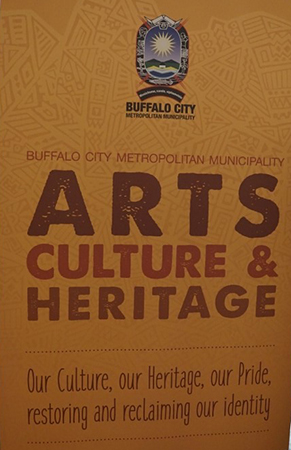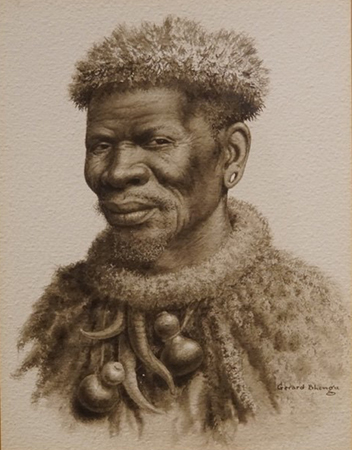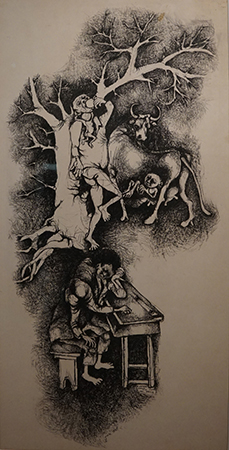Writing: Reviews & Think Pieces
Opening of the exhibition DeBeers Centenary Art Collection Revisited in East London
by Lifang Zhang
The exhibition DeBeers Centenary Art Collection Revisited, which formed part of the Umtiza Art Festival in East London, was opened at Ann Bryant Gallery on 24 May. Most of the paintings and sculptures shown in the exhibition are from University of Fort Hare's Collection of Contemporary South African Black Art, which was started by the Department of African Studies in 1964. It was the first time the collection was lent out to a gallery outside the university. Most artists featured in the exhibition are important contributors to the development of South African black arts, including Gerard Bhengu, George Pemba, Dumile Feni, and Durant Sihlali.
When asked about how to select artworks from the extensive collection, Leon du Preez, the Curator of the Ann Bryant Gallery, said that most works in exhibition are Township Art. Commenting on the relationship between Township Arts and the theme of the art festival Arts: Culture & Heritage(fig 1), the curator said “Township as a historical heritage is still there in our city. You can still see the scene and life experience depicted in these works. I think these works can also be inspirations to the artists today, including the techniques.”
As the most extensive and powerful manifestation in Black art in South Africa, Township Art showed a close similarity with Black writing and Black poetry during 1960s and 1970s as part of the general awareness of identity occurring in all spheres of life of South African black people (for further reading see Images of Man by E J De Jager). The artists represented their social reality in urban circumstances of townships in figurative and expressionistic terms illustrated by Dumile's work Father Teach Me How to Pray (Fig 3) with its distorted strokes, expressive figures and strong emotion.
There were three exhibition rooms on the ground floor and one mezzanine room. Portraits by Gerard Bhengu (Fig 2) hanging in the first space after the entrance brought a unique view as all the figures are characterized with almost photographic detail while works by other artists more expressive. The mezzanine room displayed Cecil Skotnes’s striking prints, however, there were no tags providing information about the works. The other two rooms displayed paintings and sculptures from the Fort Hare University Collection mixed with some works from the collections of the Ann Bryant Gallery, without certain order as observed. It was a delightful experience to see the opening with our group members of the Arts of Africa and Global Souths programme. As a visitor, however, I did expect that more information could be delivered in terms of interaction between the collection’s historical significance and the current exhibition space.
Key words: collection of the University of Fort Hare, De Beers Collection, Umtiza Art Festival

Fig 1 art festival poster (photo by Lifang Zhang 24/05/2018, Ann Bryant Art Gallery, East London)

Fig 2 Gerard Bhengu, Isangoma, 32.5*25cm, sepia, (photo by Lifang Zhang 24/05/2018, Ann Bryant Art Gallery, East London)

Fig 3 Mhlaba Dumile, Father teach me how to pray (1967), 210*122 cm, Conte crayon on paper, (photo by Lifang Zhang 24/05/2018, Ann Bryant Art Gallery, East London)
Lifang Zhang is an MA student with the NRF/DST SARChI Chair Geopolitics and the Arts of Africa, Arts of Africa and Global Souths research programme headed by Prof Ruth Simbao at the Department of Fine Arts, Rhodes University, South Africa
Last Modified: Mon, 11 Feb 2019 10:48:08 SAST
